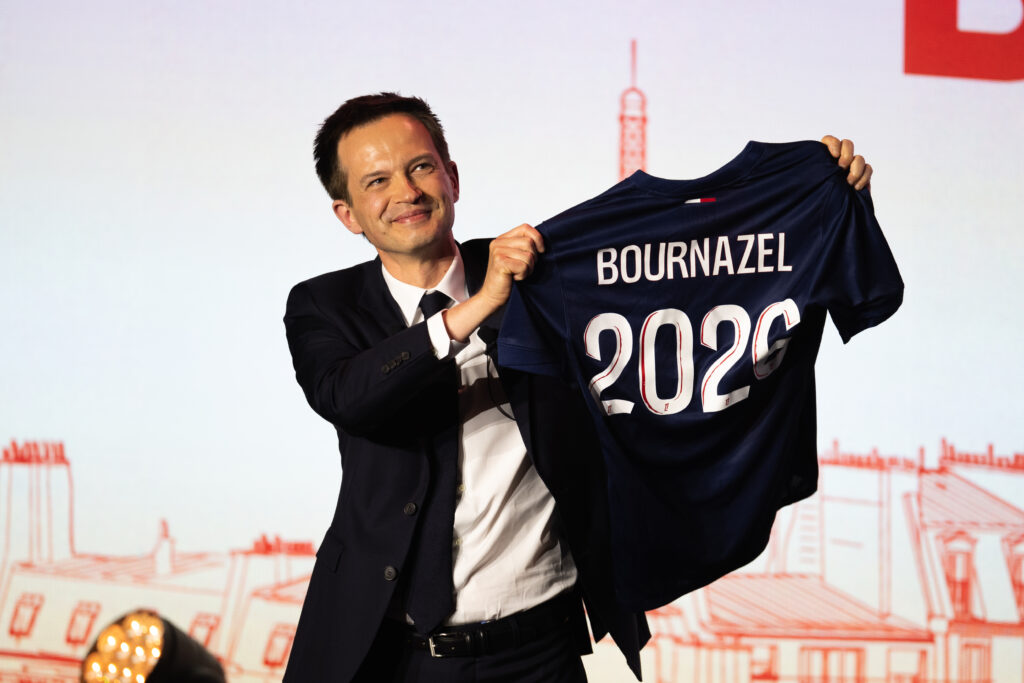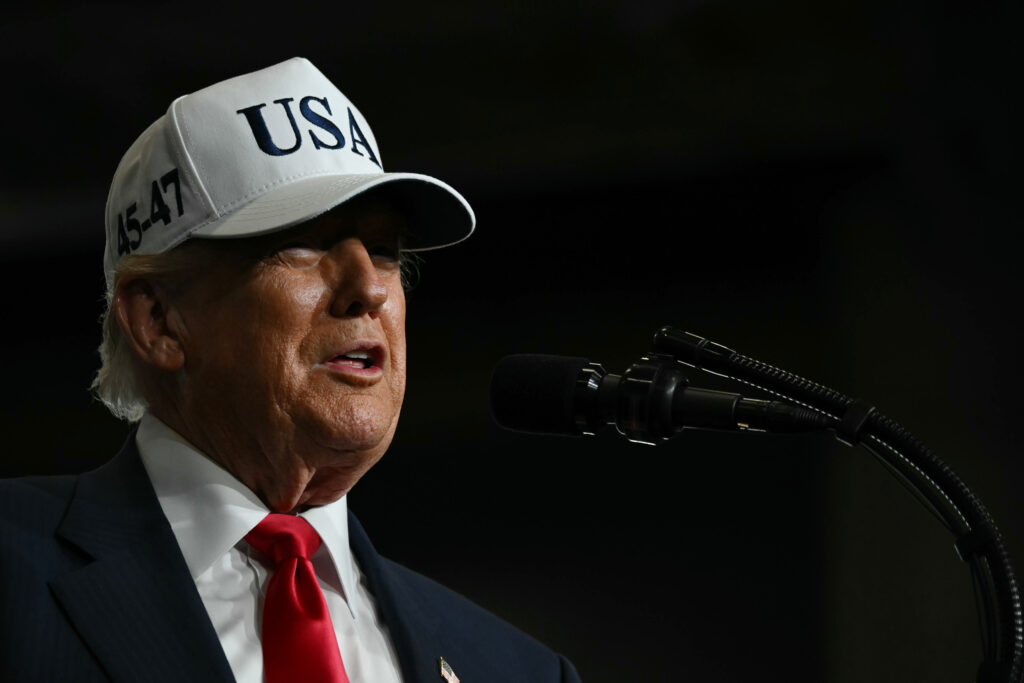‘Catastrophic’ hurricane slams Jamaica with fierce winds and rain
Hurricane Melissa ripped up trees and knocked out power after making landfall in Jamaica on Tuesday as one of the most powerful hurricanes on record, inundating the island nation with rains that threaten flash floods and landslides.The destructive storm struck Jamaica with ferocious sustained winds clocking 185 miles (300 kilometers) per hour on its deadly march across the Caribbean.”This is an extremely dangerous and life-threatening situation!” warned the US National Hurricane Center, urging residents to stay sheltered and as far from windows as possible, including during the brief calm offered by the storm’s eye.Even as wind speeds dipped to 150 miles per hour, Melissa drenched communities and wreaked damage that may take days to assess as communication links remained largely down.Surges in seawater combined with rainfall — which will likely be measured in feet, not inches — could trigger massive floods and landslides on the island with a population of 2.8 million.The hurricane was the worst to ever strike Jamaica and hit land with maximum wind speeds even more potent than most of recent history’s most brutal storms, including 2005’s Katrina, which ravaged the US city of New Orleans.- ‘Severely damaged infrastructure’ -Even before Melissa slammed into Jamaica, seven deaths — three in Jamaica, three in Haiti and one in the Dominican Republic — had been blamed on the deteriorating conditions.Melissa, now downgraded from Category 4 to 5 as its center moved off Jamaica, was set to hit Cuba on Tuesday evening and then the Bahamas.Jamaica’s climate change minister told CNN that Hurricane Melissa’s effect was “catastrophic,” citing flooded homes and “severely damaged public infrastructure” and hospitals.And as if that weren’t enough: health authorities were urging vigilance against crocodiles displaced by the torrential storm.”Rising water levels in rivers, gullies, and swamps could cause crocodiles to move into residential areas,” posted the South East Regional Health Authority (SERHA) in a public service announcement on Instagram.Mathue Tapper, 31, told AFP from Kingston that those in the capital were “lucky” but feared for fellow Jamaicans in the island’s more rural areas.”My heart goes out to the folks living on the Western end of the island,” he said.The mammoth storm could leave devastation on the scale of some of the worst hurricanes in recent memory like Katrina, Maria or Harvey.- Climate change impact -Broad scientific consensus says human-driven climate change is responsible for intensified storms like Melissa that are occurring with increased frequency and higher potential for destruction and deadly flooding.Melissa had quickened slightly, but still lingered over the island enough that the rains were particularly dire.”Human-caused climate change is making all of the worst aspects of Hurricane Melissa even worse,” said climate scientist Daniel Gilford.The Jamaican Red Cross, which was distributing drinking water and hygiene kits ahead of infrastructure disruptions, said Melissa’s “slow nature” exacerbated the anxiety.The UN is planning an airlift of some 2,000 relief kits to Jamaica from a relief supply station in Barbados once air travel is possible. Assistance is also planned to countries including Cuba and Haiti, UN spokesperson Stephane Dujarric said in a briefing.Jamaican officials said some 25,000 tourists were in the country famed for its normally crystalline waters.Olympian sprinter Usain Bolt, one of Jamaica’s most famous figures, was posting regularly on social media with messages for his home country: “Pray for Jamaica.”
A Paris, Pierre-Yves Bournazel prêt à bousculer le jeu municipal
Après deux échecs dans la course à la mairie de Paris, Pierre-Yves Bournazel, 48 ans, proche d’Edouard Philippe et conseiller de Paris depuis 2008, se sent pousser des ailes en vue des municipales de mars, fort du soutien du parti Renaissance.”Ma candidature, c’est quelque chose de réfléchi depuis quinze ans, c’est quelque chose qui vient de loin”, déclarait-il récemment à l’AFP. Battu en 2013 lors de la primaire de la droite, l’homme s’était de nouveau aligné en 2020, avant de se rallier au candidat macroniste Benjamin Griveaux, puis à Agnès Buzyn.Le quadragénaire entend profiter d’une image plutôt consensuelle, se percevant comme un “challenger” entre une majorité “à bout de souffle, en place depuis un quart de siècle”, et Rachida Dati, la maire du 7e arrondissement investie par LR, “une candidature de la revanche et de la régression”.Né dans le Cantal d’un père assureur et d’une mère assistante comptable, Pierre-Yves Bournazel revendique l’héritage d’un grand-père engagé sur le front en 1940, qui lui a transmis sa “méfiance des extrêmes”. Après une enfance à Tulle (Corrèze), il poursuit ses études à Sciences Po Toulouse puis fait ses armes en politique aux côtés de Françoise de Panafieu, candidate UMP à la mairie de Paris.Un temps conseiller presse de Rachida Dati, ce partisan d’Alain Juppé est élu conseiller de Paris dans le 18e arrondissement en 2008, fonction qu’il occupe toujours depuis.Elu conseiller régional sur la liste de Valérie Pécresse en 2010, puis député LR en 2017, il rejoint rapidement “Agir”, soutien d’Emmanuel Macron, puis le parti Horizons d’Edouard Philippe en 2021.Interrogé par l’AFP sur son poulain, l’ex-Premier ministre vante “un enracinement qui a beaucoup à voir avec l’école chiraquienne et une modernité des aspirations économiques et sociales”.”C’est un dur qui a l’air gentil”, confie encore le maire du Havre, louant ses capacités à “ne rien lâcher” et à “rassembler à droite et (…) un peu à gauche aussi”.- “Elu implanté” -“Pierre-Yves laboure le terrain, il connaît Paris comme sa poche”, saluait en juin Agnès Buzyn. “C’est quelqu’un qui vit, qui pense, qui respire Paris”, confirme Florence Berthout, maire Horizons du Ve arrondissement. A gauche, Ian Brossat, candidat PCF à la mairie de Paris, reconnaît un “élu implanté qui a mené sa barque avec sérieux depuis une quinzaine d’années”.”Il profite aussi, sans doute, du fait que Dati est devenue infréquentable aux yeux d’une partie de la droite parisienne”, poursuit le sénateur, une allusion à ses démêlés judiciaires. La ministre de la Culture sera jugée en septembre 2026 pour corruption et trafic d’influence, soupçonnée d’avoir indûment perçu 900.000 euros entre 2010 et 2012 d’une filiale de l’alliance Renault-Nissan.”Rachida est candidate pour Dati. Moi je suis candidat pour Paris (…). Nous n’avons pas le même rapport à la vérité”, taclait Bournazel en juin.Signe d’un possible alignement des planètes, un sondage interne à Renaissance réalisé en août le donnaît à 14% des suffrages au premier tour s’il était soutenu par les marcheurs, contre 21% pour Rachida Dati, en baisse d’environ dix points par rapport à un précédent sondage en juin.Le soutien de Renaissance à Bournazel pourrait le propulser dans la course. Mais certains en doutent. “J’adore Pierre-Yves (…) Simplement ce n’est pas un candidat à la mairie de Paris, c’est un candidat à la mairie du 18e”, confiait encore en mai un député macroniste, doutant de ses capacités à mener une bataille qu’il compare à une “semi-présidentielle”.”L’intéressé préfère quant à lui se présenter comme un “écologiste convaincu”, rappelant par ailleurs sa position en faveur de la PMA pour les couples de femmes et les femmes célibataires et en faveur du mariage homosexuel. Parmi ses priorités, il entend lutter “contre le bétonnage de la ville” et contre “le gaspillage des deniers publics”, avec un plan d’économies d’un milliard d’euros sur six ans.
Cameroon blames post-vote deaths on opposition leaderTue, 28 Oct 2025 21:12:53 GMT
Cameroon’s government on Tuesday acknowledged that people died during protests against the disputed re-election of 92-year-old President Paul Biya, the world’s oldest head of state, but blamed the opposition leader for the deaths.Four people have been reported killed in the central African nation since demonstrators took to the streets to protest the announcement that Biya, …
Cameroon blames post-vote deaths on opposition leaderTue, 28 Oct 2025 21:12:53 GMT Read More »
Municipales: à Paris, Renaissance tourne le dos à Dati et soutient Bournazel
Renaissance a entériné mardi son soutien à Pierre-Yves Bournazel, du parti Horizons d’Édouard Philippe, pour les élections municipales à Paris, un choix qui divise au sein du parti macroniste dont une partie œuvrait pour un soutien à Rachida Dati.La commission d’investiture du parti dirigé depuis un an par Gabriel Attal a “validé à l’unanimité moins deux voix le soutien à Pierre-Yves Bournazel”, a indiqué le parti.Lors de cette réunion, la direction de Renaissance a plaidé pour ce “candidat de rassemblement”, “plus clair sur la gouvernance, le projet et la répartition” sur les futures listes électorales à composer, “contrairement à Dati, plutôt muette sur nos attentes”, selon un des participants.Mais cette décision ne fait pas l’unanimité: le député Sylvain Maillard, artisan d’un soutien à Mme Dati, a annoncé mardi qu’il se mettait “en retrait” de la présidence de la fédération Renaissance de la capitale, ajoutant au Parisien qu’il entendait “jouer un rôle, être au cœur de la campagne” de la ministre de la Culture.Quarante-et-un cadres et élus parisiens de Renaissance, dont David Amiel, Olivia Grégoire et Astrid Panosyan-Bouvet, justifient au contraire, dans une tribune à L’Opinion, leur soutien à M. Bournazel, dénonçant notamment la “foire d’empoigne” des Conseils de Paris, où Rachida Dati mène l’opposition à Anne Hidalgo.M. Maillard, qui fut le premier député du parti macroniste élu en 2017, reste néanmoins membre de Renaissance, a-t-il précisé à l’AFP.- Le cas Édouard Philippe -Ancien du parti de droite Les Républicains, soutien d’Édouard Philippe depuis 2017, secrétaire général d’Horizons, Pierre-Yves Bournazel, 48 ans, fait un pas vers l’Hôtel de ville, son ambition de longue date, après une candidature à la primaire des LR en 2014 et un ralliement à Renaissance en 2020.M. Bournazel et Gabriel Attal devraient s’afficher prochainement lors d’un déplacement commun dans la capitale.”Renaissance aura 55% de place dans ma liste, ainsi que dix têtes de liste pour les mairies d’arrondissement”, a précisé M. Bournazel dans un entretien au Parisien.Les partisans d’un soutien à Mme Dati ont notamment dénoncé les déclarations d’Édouard Philippe suggérant à Emmanuel Macron une démission pour une élection présidentielle anticipée.Favorable au soutien à M. Bournazel, le ministre David Amiel l’a lui aussi invité à ne “participer à strictement aucune des attaques insupportables d’Horizons contre le président de la République”.Favorable à un appui à Mme Dati, la ministre Aurore Bergé a par ailleurs demandé un “engagement public” de M. Bournazel qu’il ne rallierait pas le candidat socialiste Emmanuel Grégoire s’il n’était pas en tête au premier tour.- “Tractations nationales” -Rachida Dati, soutenue par Emmanuel Macron selon plusieurs sources, faisait figure de candidate évidente pour une partie des macronistes depuis son entrée au gouvernement en 2024.Mais ce scénario avait également ses détracteurs qui pointaient par ailleurs les ennuis judiciaires de Mme Dati, qui sera jugée après l’élection, en septembre 2026, pour corruption et trafic d’influence dans l’affaire Renault-Ghosn. Des faits qu’elle conteste.La maire du 7e arrondissement a entre-temps reçu l’investiture des LR. Mais les relations restent compliquées avec le parti de droite, dirigé par Bruno Retailleau, qui a suspendu les ministres de son parti membres du gouvernement Lecornu 2.La porte-parole de LR et présidente de la fédération parisienne Agnès Evren a dit à l’AFP “regretter cette candidature concurrente qui n’a pas de sens” alors que “contrairement à la gauche, nous sommes d’accord sur l’essentiel”.Proche de la ministre de la Culture, la conseillère de Paris Nelly Garnier a pointé une décision de Renaissance “faite selon des tractations nationales” avec Horizons. “Nous, notre objectif est d’accueillir tous les gens de Renaissance qui veulent s’inscrire dans une dynamique gagnante.”S’il n’y a “pas d’accord national” entre les deux partis, Horizons va soutenir les têtes de liste Renaissance à Annecy, Bordeaux, Dijon, Lille et Nîmes, a précisé Renaissance.L’élection à Paris (15 et 22 mars) est incertaine, Anne Hidalgo ne se représentant pas après 24 ans de gestion PS depuis l’élection de Bertrand Delanoë.A gauche, le candidat socialiste Emmanuel Grégoire, ancien premier adjoint de Mme Hidalgo, et l’écologiste David Belliard sont engagés dans de difficiles discussions sur une union dès le premier tour, chacun revendiquant la tête de liste.
Trump heads to South Korea with all eyes on Xi meeting
US President Donald Trump heads Wednesday for South Korea, where a key meeting with Chinese leader Xi Jinping could produce a truce in the blistering trade war between the world’s two largest economies.Trump’s two-day visit to key US ally South Korea is the third leg of a trip to Asia that has seen him lauded at a regional summit in Malaysia and flattered as a “peacemaker” by Japan’s Prime Minister Sanae Takaichi.But the eyes of the world will be on a meeting set for Thursday — the first time in six years Trump sits down with Xi.It could determine whether the United States and China can halt a trade war that has roiled global markets and sent international supply chains into panic.Negotiators from Beijing and Washington have both confirmed a “framework” has been agreed.It is now down to Trump and Xi, who will meet on the sidelines of the Asia-Pacific Economic Cooperation (APEC) summit in the city of Gyeongju, to sign off on it.”There seems to be a mismatch in terms of where both countries are, heading into the Trump-Xi summit,” said William Yang, an analyst at the International Crisis Group.The United States “is eager to reach any trade deal that Trump could declare as a victory”, while China is focused on “building more mutual trust, managing longstanding differences, and steadying the bilateral trade relationship”, he added.- ‘Complicated’ -Trump is due to land in the South Korean city of Busan, fresh from two days in Tokyo, where Japan’s new conservative premier Takaichi hailed a “golden age” in bilateral ties.The US president will head to Gyeongju for a summit with South Korean President Lee Jae Myung — their second in-person talks just two months after a meeting in Washington.Discussion will likely be focused on trade, with the two sides still deadlocked over a deal between the major economic partners.In July, Trump said Washington had agreed to cut tariffs on South Korean imports to 15 percent in exchange for a $350 billion investment pledge by Seoul.Steep auto tariffs, however, remain in place, and the two governments remain divided over the structure of the investment pledge.US Treasury Secretary Scott Bessent admitted Monday there was still “a lot of details to work out” in what he said was a “complicated” deal, while Trump has denied that there was a “snag” in the talks.Activists plan to welcome the US leader, whose sweeping tariffs triggered the trade war, with anti-Trump demonstrations in Gyeongju condemning his “predatory investment demands”.- DMZ meeting? -Adding to the diplomatic high drama, Trump has also extended an invitation to North Korean leader Kim Jong Un to meet while he is on the peninsula.The two leaders last met in 2019 at the Demilitarised Zone (DMZ), the fraught Cold War frontier that has separated the two Koreas for decades.Trump has said that he would “love to meet” Kim and even suggested sanctions could be a topic for conversation.But North Korea is yet to respond publicly to the invitation. Officials in Seoul appear divided as to whether it will go ahead.Kim said last month he had “fond memories” of his meetings with Trump.He also expressed openness to talks if the United States dropped its “delusional” demand that Pyongyang give up its nuclear weapons.”Trump’s made it clear he wants to meet,” Chad O’Carroll, founder of the specialist website NK News, told AFP.”The ball is in Kim Jong Un’s court.”But the US leader now faces a different Kim than in 2019 — one emboldened since their diplomatic love affair during Trump’s first term, having secured crucial backing from Russia after sending thousands of North Korean troops to fight alongside Moscow’s forces.”North Korea has time on its side and isn’t as isolated as before,” said Hong Min, a senior analyst at the Korea Institute for National Unification.”A surprise event to show personal rapport is possible, but a negotiation with tangible results — like denuclearisation talks — will not happen,” he told AFP.burs-oho/ami/des
Vente d’iPhone: Apple condamné à indemniser trois opérateurs pour près de 39 millions d’euros
Le géant américain Apple a été condamné en France à payer une amende et des indemnisations pour avoir imposé des clauses défavorables aux opérateurs dans ses contrats, notamment concernant la vente d’iPhone, selon une décision consultée par l’AFP, confirmant une information du média L’Informé.Le tribunal des activités économiques (ex-tribunal de commerce) de Paris a ordonné …
De nouvelles frappes américaines contre des bateaux de narcotrafiquants présumés font 14 morts
Les Etats-Unis ont mené lundi trois nouvelles frappes contre quatre embarcations de narcotrafiquants présumés dans le Pacifique est, faisant 14 morts, a annoncé mardi le ministre américain de la Défense, Pete Hegseth, portant à au moins 57 victimes le bilan de leur campagne antidrogue.”Hier (lundi), sur ordre du président (Donald) Trump, le ministère de la Guerre …






